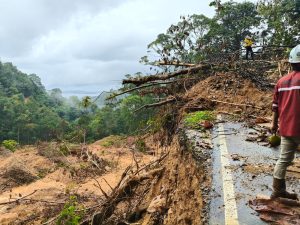Jakarta – Due to global warming, around 15,000 virus transmissions from species to new species can occur over the next 50 years, reports said Friday (6/5). This encourages wild animals to migrate to human territory, thus triggering the emergence of new pandemics.
Quoted from Science Daily, an international study led by scientists from Georgetown University, USA, published in Nature, April 28, examined “geographic range shifts” or the movement that species take as they travel to new habitats.
When these species meet other mammals for the first time, studies project they will share thousands of viruses. This trip, the study says, has an even greater chance of bringing viruses like Ebola or the coronavirus to new areas and making them more difficult to track. The virus can enter a new animal and make it a “stepping stone” to then infect humans.
“The closest analogy is actually the risks we see in the wildlife trade,” says Colin Carlson, the study’s lead author and assistant research professor at the Center for Global Health Science and Security at Georgetown University Medical Center.
He said researchers are concerned about animal markets, because bringing unhealthy animals in unnatural combinations creates opportunities for this stepwise process of pandemic emergence, “like how SARS jumped from bats to civets, then civets to people.”
However, said Carlson, markets are no longer special when compared to climate change which can mimic wet market conditions on a global scale. In the study, scientists predict a global temperature rise of even less than two degrees Celsius will shift the habitats of some wild animals closer to humans.
In a changing climate, such processes will become a reality in nature everywhere. He said this phenomenon causes animals to move disproportionately in the same place as human settlements, as well as creating new hotspots.
The research team says most of this process may already be taking place in a world that is already 1.2 degrees warmer today and efforts to reduce greenhouse gas emissions may not stop this event.
The study also found that “because of their unique dispersal capacity, bats account for the majority of novel viral sharing, and are likely to share viruses along evolutionary pathways that will facilitate future emergence in humans.”
Researchers predict the greatest impact will occur in Southeast Asia, home to a wide variety of bats. Carlson said that the “simulations have taken us by surprise. We’ve spent years double-checking those results, with different data and different assumptions, but the models always lead us to these conclusions. It’s a really stunning example of just how well we can, actually, predict the future if we try.”
As viruses begin to move between species hosts at an unprecedented rate, the study authors say the impact on conservation and human health can be unpredictable.
Overall, this study shows that climate change is the biggest upstream risk factor for disease emergence, outpacing the effects of deforestation, wildlife trade and industrial agriculture. The study authors say the solution to this problem is to implement wildlife disease surveillance. (Hartatik)
Banner photo: Ketut Subiyanto/pexels.com














